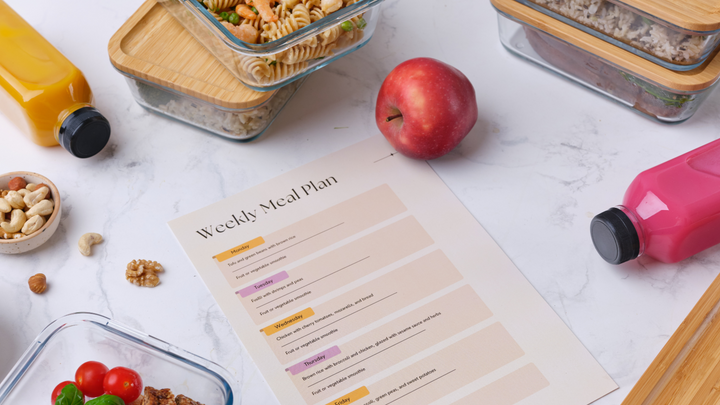Q & A: February 13, 2011
From now on, every Sunday, I will be answering your questions. I’ll answer as many questions as I can each week.

Welcome to CHEESESLAVE Q & A!
From now on, every Sunday, I will be answering your questions. I’ll answer as many questions as I can each week.
If I didn’t answer your question this week, please check back next week.
Be sure to sign up for my email updates so you never miss a post:
Enter your email address:
Submit Your Question
If you have a question to submit, please email it to me at questions@cheeseslave.com.
If you have an URGENT question that you can’t wait to get answered, please post it on my Facebook page. I tend to get on Facebook pretty much daily. I can’t promise to answer all the questions on Facebook, but I try! (Note: Do NOT email me on Facebook — I can’t get through my email on there!)

Question: Avocado Oil — Good or Bad?
My question is what you think about avocado oil, good or bad? I was just reading your post this weekend about a healthier potato chip option. In that you mentioned that you had not tried Good Health’s avocado chips. I have and think they are great. Of course I try not to eat many, and unfortunately they are not organic; however, it made me wonder about avocado oil. It does have a higher smoke point than olive oil (they also make the olive oil chips), so perhaps the avocado oil is a healthier option since they are frying the chips. For the most part I use coconut oil, a little olive oil; and have used avocado oil in the past. Thanks!
— Krissy
Answer
Hi, Krissy!
Avocado oil is good! According to the Weston A. Price Foundation, avocado oil is OK because it is “high in oleic acid.” It also has a high smoke point, so it’s not likely to go rancid like sunflower oil or other vegetable oils many companies use for frying.
It is in the WAPF shopping guide (you can get one when you become a member) that I originally read about the Good Health Natural Products potato chips, so yes, they are WAPF-endorsed.
I buy the potato chips from Good Health Natural Products often. We love their chips!
Of course it’s not as good as some of my favorite fats — including grass-fed butter and beef tallow, pastured lard, coconut oil and palm oil. But when I met the folks from Good Health Natural Products, (click here to read my post about meeting them) they told me that they have to be realistic — the average person is not going to be chips fried in healthy beef tallow or lard. They’ve been scared to death by the Powers That Be!
Now, if you live in or around Pennsylvania, I know for a fact that you can get fabulous potato chips fried in pastured lard (can you say vitamin D, folks?) from Amos Miller’s farm.
Oh well what do you know, I just googled it and found out that they do have a website now. God love the internet! And God love the Amish for getting online!
Click here to see the potato chips fried in lard in their shopping cart.
However, this website seems to have been built for folks in South Florida (hey, we get Amos’ products here in Los Angeles, too — they send a truck). Amos ships and trucks his products all over the country.
If you want to find out how you can find or establish a local buying club for these fabulous (and they are fabulous, I’ve eaten them) lard potato chips, call Amos Miller at 717-556-0672.
Question: Menu Planning?
I’m making my menu for the week and just wondering – is there a guideline for how much of what to eat during a week? For example; how much fermented veggies, cultured dairy, meat, fish etc. I’m trying to eat more real food and I need to move beyond the meat and veggies for dinner. Thanks!
— Robin
Answer
Wow, great question. I think you’re smart to think outside of the box of just meat and veggies. In fact, lean meat and vegetables is not something that is recommended by the Weston A. Price Foundation.
Fat is where it’s at, so you want to make sure your meal has its foundation in quality fats. I know, it sounds crazy considering what the media tells us.
The WAPF recommends eating real foods that are nutrient-dense. So that’s really where your focus should be. Nutrient-density is the number one factor when choosing what to put on the plate.
So, white flour? That would be a non-starter. Zero nutrition in white flour.
White sugar? Same as above.
Soybean oil? Ditto. Zero nutrients.
Grass-fed butter? Now we’re talking.
Organ meats? Oh, yes.
Shellfish and mollusks? Right on.
Fill your plate with as many nutrient dense foods as you can, and minimize the foods that are the nutritional lightweights.
Some examples:
Liver is much more nutritious than a steak.
Eggs are much more nutritious than cereal.
Oysters, scallops, and salmon roe are much more nutritious than salmon. And salmon is much more nutritious than rice.
But you probably already know all that…
To be more specific, I would try to include a fermented food with every meal. It can be a condiment or a small smattering of a side dish. Such as a small bowl of probiotic salsa or some lacto-fermented ketchup on a burger. A little sour cream in your soup or on your baked potato. Some cultured butter or cheese. Or a glass of kombucha or kefir soda pop.
You also want to include bone broth in as many meals as possible. You can cook your beans or rice in chicken stock, and make soups, sauces and gravies with it.
Lastly, make sure you eat plenty of good fat with every meal. Oh, right, that’s what I started with. We’ve come full circle. But it bears repeating.
As I always say, the fat is where the vitamins are! Good fats are: grass-fed beef tallow or butter or cream, pastured lard, duck or goose fat, coconut or palm oil. All non-hydrogenated.
Question: Making Whey from Raw Milk
Hi, thanks for all the great info and discussion on your site.
I’d ask for some clarification on your process for making whey from raw milk.
I’ve had no problem extracting whey from yogurt but have had discouraging and disgusting results from simply leaving raw milk out for 2-4 days.
— Anil
Answer
Hi, Anil,
I’m sorry but I can’t help with this one. I have never made yogurt from raw milk. I am hoping some folks can post advice in the comments. (In fact, the next person asking a question seems to be an expert — maybe Lauren can answer!)
Question: What to Do with Whey?
So, my family loves the homemade Greek yogurt I make — I usually use a whole gallon of my expensive grass fed raw milk each week to make it… but then I dump quarts of whey down the drain!
We don’t eat any grains except a little rice and I do use some of the whey to ferment veggies… but not that much. Is there any other use for whey? I hate to throw it away but I don’t know what else to do with it.
Thanks in advance!
— Lauren
Answer
Great question. (And while I’ve got your attention, can you please answer Anil’s question re: how to make yogurt with raw milk? See the question above and please post in the comments. Thanks!)
According to Joanne Hay at Nourished Magazine:
Whey has been used for centuries by European, Middle Eastern and Asian peoples. In Iceland, whey, the bi-product of curd making, was kept in barrels. It was used to preserve food such as sausages, whale meat and blubber. Icelanders also drank it with water as a digestive tonic, much like other in traditions people drank ale.
Whey is a great source of minerals and digestive bacteria. It is useful for fermenting veggies and recipes like Kimchi, Sauerkraut or Beet Kvass (a fermented drink made from beetroot). Or just to drink when you have an upset stomach.
There are so many things you can make with whey. Here are just a few lacto-fermented food that I make with whey:
- Salsa
- Mayonnaise
- Ketchup
- Sauerkraut
- Beet kvass
You can also add whey to smoothies.
Here are some more ideas from Jenn Allbritton in an article she wrote about whey on the WAPF site:
- Drink it! Drink it straight or mix it in with a fermented beverage or hot tea.
- Freeze whey into ice cubes and blend them into smoothies for a more slushy texture or cool-down a beverage on a hot day.
- Replace a portion of the water used to cook grains.
- Include in soaking water in legumes and grains to improve digestibility (see Nourishing Traditions for details).
- Lacto-ferment almost anything – apples, zucchini, cabbage, cherry chutney, ginger carrots—see Nourishing Traditions

by Sally Fallon Morell and Wild Fermentation

by Sandor Ellix Katz.
- Feed to pets – chickens, dogs, cats, they all can benefit from this nourishing liquid.
There’s also a new online class starting March 4th. Jenny at the Nourished Kitchen blog is teaching a 13-week class on fermentation called Get Cultured! How to Ferment Anything.. She is going to be teaching all kinds of ways to use whey. Click here to see the class schedule. Jenny is offering my readers an extra special discount. Use coupon code SOURPICKLES and get $20 off! The coupon expires February 19 — this is the only coupon code that will be offered online.
Lastly, you could always barter the whey. There are lots of people out there who don’t make yogurt at home (I’m one of them). So I don’t have whey on hand. I would trade all kinds of things for extra whey — including fresh tomatoes and herbs from my garden, homemade corn tortillas or sourdough bread. Ask your friends and neighbors if someone wants to trade.
But please, whatever you do, don’t throw it away!
Got a Comment?
I don’t claim to have all the answers. And I love hearing from you guys! If you have feedback on any of the above questions and answers, please share your thoughts n the comments below.
Got a Question?
Please submit your questions to questions@cheeseslave.com. I’ll answer your questions every Sunday in the order I receive them.
Photo credit: Sirwiseowl on Flickr



Comments ()